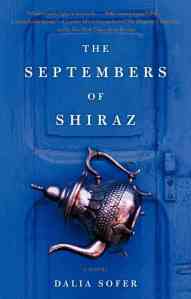 Title: Persepolis 2
Title: Persepolis 2
Author: Marjane Satrapi
Genre: Autobiography, Memoir, Graphic Novels
Source: Borrowed
Pages: 187
Format: Paperback; 978-0-375-71466-5; $12.95
Rating: 10/10 (5/5 Goodreads)
Summary:
Marjane’s parents send her to Austria to escape the Iranian Revolution and its new strict and oppressive social codes. Marjane lives, grows, and learns in Europe while she grapples with her identity as an immigrant and modern woman. As she becomes an adult Marjane realizes that she needs to return to her family and Iran to reconnect with and truly discover who she is. What she learns is that borders do not define a person and that what truly defines us is the choices we make and the character we build.
Review: This novel was freakin’ fantastic. It got my migrant studies part of my brain buzzing with excitement. However, the first thing that I love about this text is the art. The illustration style is different from a lot of the graphic novels I’ve read lately. It is much more focused on universality than absolute detail. What I mean by this is that you will notice, particularly with Satrapi’s illustrations of herself, the images convey a sense “this can be anyone and everyone,” that this experience gives voice to anyone fighting marginality and dealing with the migrant experience.
This experience with migration, being an “in-between” in a foreign country, and then returning home and finding you no longer fit in with your homeland is what Satrapi examines in Persepolis 2. In this light, Satrapi’s novel is set against the backdrop of the Iranian Revolution, the civil war that ended Iran’s freer secular society and brought on an Islamic fundamentalist state. The loss of freedom to live her life as a free, independent, and cosmopolitan woman is why Satrapi’s parents send her away to Vienna, Austria. Unfortunately, this migration brings its own hardships and subtle forms of oppression. In Vienna, Satrapi navigates various social circles, none of which she belongs to. First, she finds herself in a group of communist-focused youth who she watches espousing the same ideologies that she left behind in Iran. She constantly cycles through friends and living spaces, which is an excellent metaphor for her continual migration though this is true to her real-life experiences.
Eventually, Satrapi feels like she no longer has a place in Europe and decides to return to her family in Iran. When she goes home, she has to learn to become Iranian again, to relearn Iranian customs and new moral codes. She must do all this while trying to be as free as possible in a country that won’t let her be so. Thus, she discovers that she is a foreigner in her homeland and as such a perpetual migrant.
Satrapi’s graphic novel is spare on prose, which is expected in a graphic novel, but what prose is included is focused on the important moments in her life, the things we must know, and what she writes is expertly done, poignant, and full of raw truth and honesty–all while being a bit cheeky about her experiences. This adds a unique voice to Satrapi’s work. Also, through this she retakes power for herself and embraces her cultural heritage. However, in the end, Satrapi must leave Iran again, this time for good. It’s interesting that once one becomes a migrant, one may continue to be a migrant or to at least occupy some in-between space; when putting down roots in another country, she will encounter the struggle with hybridity. It’s a complicated existence and she draws attention to this through a medium that allows her to illustrate in segments to mirror a segmented life. She does eventually come to a sense of wholeness and hope for the future, which in reality she finds.
In all, Satrapi’s Persepolis 2 is a beautiful, fantastic, and engrossing novel that deserves its place in the list of top graphic novels of the 21st century. If you’re looking for a great cultural read in an entertaining format, this is for you. I highly recommend this book.
Purchase:
Barnes & Noble
Your local Indiebound

